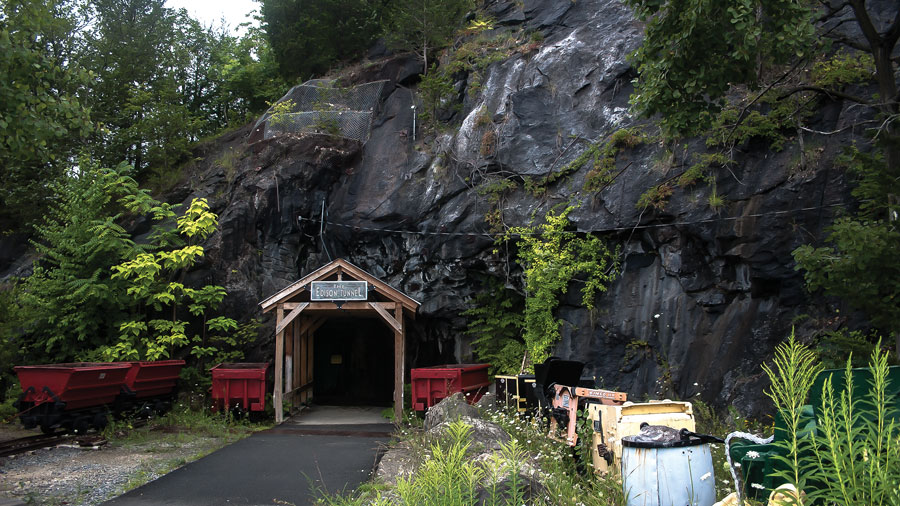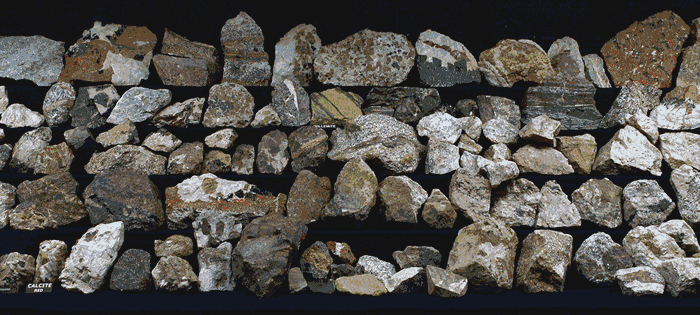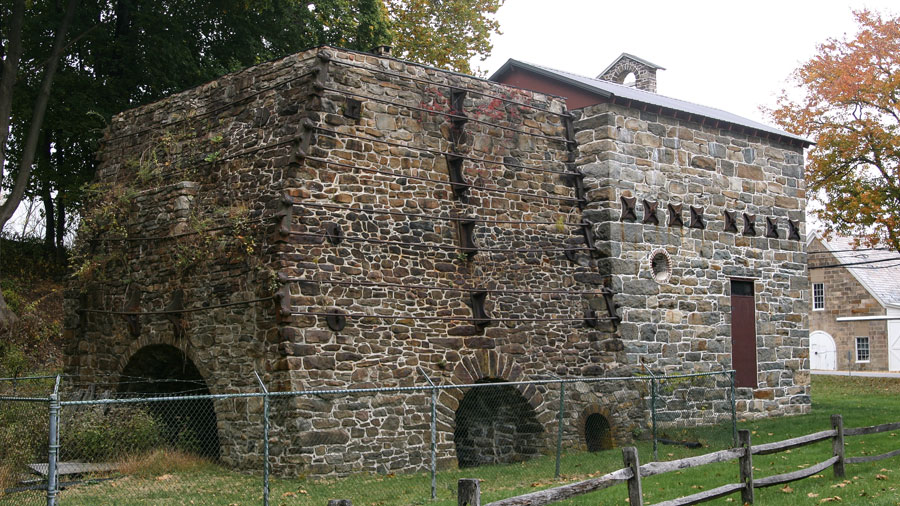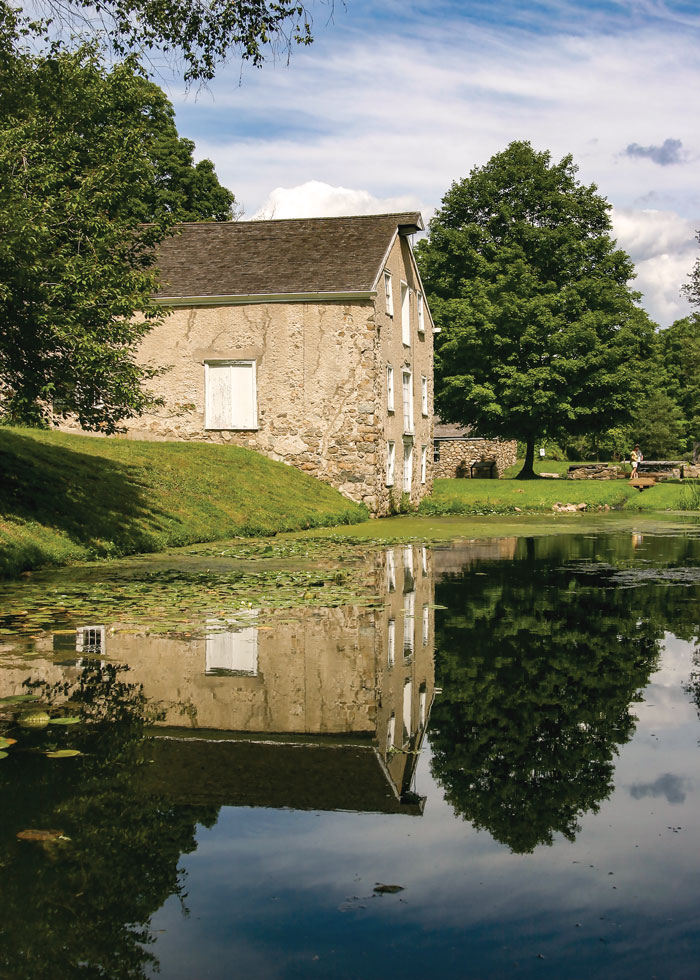
Imagine a hundred years from today. How will people remember the the beginning of this century in Northern New Jersey? Will our great grandchildren have a sense of our human reality? Will they understand the revolution of the internet, the experience of driving an automobile on an interstate or reading a magazine on paper? Will they comprehend our fears and disappointments? Will our descendants know what really "turned us on"? Will they find romance in the stories of their ancestors?
It is magical to understand another time; to reveal (for yourself, not out a book) the mysteries of the past. It is the ultimate "virtual reality" to feel the things that have happened right where you're standing- especially if they're important things. You can't touch the experience with any video, documentary or Disneyland. Exploring the past, rather than reading about it, is enchanting. And by making personal discoveries about our heritage we find more meaning in what we encounter day to day.
There is a thread of heritage and industry that began in the New Jersey highlands centuries ago, before America officially started. If you know about it, a ride on the interstate becomes a little more interesting as you approach the hills on the horizon, passing through corridors cut through the earth. And turning off onto a county highway becomes a tour through some of the richest history in America when you really know where you are.
From pre-Revolutionary times through the 1980s, the ore and minerals contained in our corner of the planet have shaped our history. Mining is the basis for a major contribution from Northwest New Jersey to modern American society. From the first established settlements in the Musconetcong River Valley the iron working communities were the most durable. Forges and foundries were the economic engines of the time, places that saw remarkable events.
Iron is only a part of the story that is told in the wealth of sites you can visit here in the Skylands. You can follow a trail of key places in the development of the Industrial Revolution- and modern American society. Out of the first established settlements in the Skylands- invariably ironworking communities- grew a network between the mines, blast furnaces, refining areas and ironworks that was by the 1840s-1860s a marvel of the times. This period, the "dead period" between the Revolution and Civil War is one of the most under-rated in our history. Before these years there were no railroads, no health care, no telecommunications, no real cohesiveness beyond a political doctrine. There wasn't even a standard currency- each bank printed its own money. Things that went on during that period right here in the Skylands had a lot to do with how we live today.
As Dick Hauck, founder of the Sterling Mine Museum explained: "It's an interesting situation. I've seen pictures of the pyramids since I was able to walk. I've seen pictures of the Parthenon all my life in history books. But until you walk up the Acropolis and actually enter the Parthenon there is a dimension that you can never describe. And walking on any of these properties, they are not a facade, not something that has been created by some illusionist. These are real places where real people spent their lives creating industry, commerce and changing the course of history. Because it was the mining and the metal industries in Northern New Jersey that created the development of this country in the earlier stages. The mining industry spans from pre-Revolutionary War, ending only eight years ago. So you're looking at a huge span of Americana. It's the multiple dimensions of these properties that can excite the senses."

Sparta, Ogdensburg, Franklin and surrounding Sussex County communities are most widely known for their rolling hills, farms, lakes, and back country lanes. Most visitors do not realize that oceans covered this area some 1.25 billion years before, a time when there was little life in the seas and even less on land, but when the astounding volume and variety of minerals in this area was deposited in as what we now know as the Franklin Marble. The area’s unusual geology helped shape a rich stream of historic discoveries, visionary people, successes, and failures. Today, we can follow that history along a corridor running from Sparta northward to Franklin, a fifteen-mile road trip that is fascinating, fun, and well worth taking!
All during the early 1800's, the mining, smelting and forging of iron was equally important in hundreds of locations throughout Northwest New Jersey. The unique ore deposits of Sussex County's Sterling Hill Mine Tour and Museum in Ogdensburg and Mine Hill (Franklin) provided an era of analysis and exploitation which eventually aided in the development of a suitable smelting process and utilization of the unique zinc ore. The resources from these mines found their way to hundreds of 20th century every day products- from automobiles and radios to pharmaceuticals and printing ink- until the Sterling Mine closed in 1986. When the mines were electrified around the turn of the century, sparks emitted from some of the equipment emitted ultraviolet light, revealing the spectacular fluorescent quality of minerals in the surrounding cavern. The sites are geological record holders: With the over 70 renowned fluorescent minerals, they are host to more than 330 minerals and are the type localities for 67 species, about half of which are found nowhere else. Today the property at Sterling Hill has been converted into a mining museum which includes over thirty acres of indoor & outdoor displays and historical buildings. It features an exciting underground mine tour where you can see the shafts from which miners brought ore from thousands of feet underground. After walking into the mine entrance, feeling the hardness of the underground surround, and continuing on a fascinating journey through the tunnels, visitors are constantly amazed when they enter a spectacular cavern lit by fluorescent minerals.
The Franklin Mineral Museum hosts exhibits pertaining to many realms of earth science; a room dedicated to American Indian archaeological and cultural artifacts; another full of fossil fish, shells, dinosaur eggs, fossil teeth and fossil dung and a wall full of striking polished slabs of petrified wood. And Welsh Hall holds more than 5,000 specimens of minerals from around the world. But the Museum’s mission is to “preserve and disseminate knowledge related to the mineral wealth, geology, and history of ‘the greatest mineral locality on Earth,’ and to foster scientific inquiry into those subjects.” Accordingly, the Museum’s primary efforts are for the acquisition and display of mineralogical and geological specimens, artifacts, and documents specific to the history and mineralogy of the Franklin-Sterling Hill mining district.

In what is now Warren County, a contemporary to the works in Morristown lay at Oxford furnace and Shippen Manor . The rich ore deposits near Oxford made it a center for the industry for about 225 years, making it the longest continuous iron producer in the United States from 1741-1965. By 1766, William Shippen II, a real-estate speculator, was the sole owner of a 4,000 acre estate and furnace tract. Shippen's investment was in natural resources agriculture, water power, forest products, and mineral deposits. The Manor which he soon built oversaw tenant farms, a gristmill, saw mill, store, and no doubt a blacksmith and some sixteen slaves noted in an early census. It was the ore that persevered, however, and Oxford saw a series of innovations in various forms of heating the blast, steam power blowing, the use of coal for fuel, and in 1835, the first blast using heated air in America. Smaller water power charcoal furnaces degenerated while Oxford was able to accept the challenges of the Industrial Revolution.
Shippen Manor has survived the centuries. Its location, situated dramatically on the brow of a hill above the village of Oxford, reflects its builder's social position and status of the estate. The building has undergone extensive renovation under the care of the Warren County Cultural & Heritage Commission and now serves as a Manor Museum/Cultural Center. 908/453-4381

For many, Waterloo Village is the place that most completely identifies the heritage of northern New Jersey. Waterloo was approximately half-way along the Morris Canal's 102-mile journey across the state, from Phillipsburg to Jersey City, and had all the components necessary to become a thriving canal town.
The restored eighteenth and nineteenth century town ,located just off exit 25 from Route 80 in Stanhope, is a comprehensive interpretation of the vigor and vitality of the Skyland's past. With its stately Victorian homes and forest groves, Waterloo's calm facade barely hints at the pivotal role the town played in over 150 years of industrial growth in the region. The village began as an iron-smelting operation in the 1760s; and became a prime supplier of armaments for the Continental Army during the Revolution. During the early nineteenth century Waterloo became an important stop on the Morris Canal. Brisk business was conducted at its gristmill, sawmill, blacksmith shop and general store, all of which have been restored.
While the ironworks have long since vanished, a visit to the site is an experience in living history, to see waterwheels power the mills, to hear the ring of the anvil, to step back in time. In association with the Canal Society of New Jersey, Waterloo Village is the site of a series of Canal Days which feature boat rides on the Morris Canal, exhibits on aspects of canal history, walking tours of the village's canal features and of its architectural history. Waterloo Village buildings are open with historic trades demonstrated at the carpenter, seamstress and blacksmith shops. The recently discovered canal boat exhibit is a remarkable highlight.